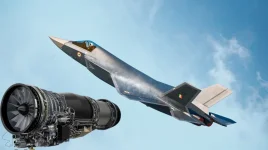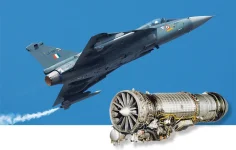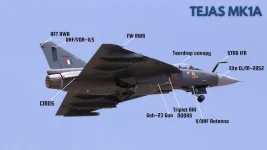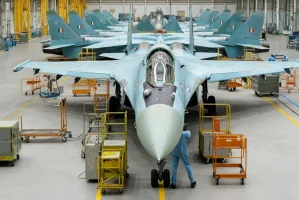- Views: 2K
- Replies: 20
India's pursuit of advanced military aviation technology is set to take a major leap forward as the Gas Turbine Research Establishment (GTRE) prepares to finalise a partnership with a global manufacturer for the joint development of a powerful new jet engine.
The agreement, expected by the end of 2025, will pave the way for a 120-kilonewton (kN) thrust engine designed to power the nation's futuristic Advanced Medium Combat Aircraft (AMCA).
The GTRE, a key laboratory under the Defence Research and Development Organisation (DRDO), is spearheading this critical project.
According to officials familiar with the plan, the collaboration aims to produce a next-generation propulsion system for the 5.5-generation stealth fighter.
The project timeline is ambitious, with developers targeting the rollout of the engine's core technology within four years, setting the stage for the first ground tests of a complete demonstrator engine by 2029.
Ambitious Timeline for a Critical Technology
The development program has been mapped out in distinct phases to ensure the engine meets the advanced requirements of the AMCA Mk-2 variant. Following the finalisation of the international partnership, the project milestones are as follows:- By 2029: The engine's core, the most complex component that generates the initial power, is scheduled for completion. A full technological demonstrator, which includes an afterburner for short bursts of maximum power, will undergo its first run and begin comprehensive ground testing.
- By 2032: After successful ground trials, the engine will be fitted to a dedicated flying test aircraft for three years of rigorous airborne evaluation. This phase is crucial for assessing performance, reliability, and safety in real-world flight conditions.
- Post-2032: Once airborne tests are complete, the engine will be integrated with an AMCA prototype for final validation. The certification for the initial batch of production-ready engines is anticipated to be completed within approximately seven years from the start of the project.
Capabilities and Long-Term Strategic Vision
This new engine is being designed to provide cutting-edge capabilities essential for a modern stealth fighter. Key features will include the ability to supercruise, which is sustained supersonic flight without the heavy fuel consumption of an afterburner.It will also boast a high thrust-to-weight ratio for superior agility, advanced stealth characteristics to reduce detection, and greater fuel efficiency for extended operational range.
The project is viewed as a cornerstone of India's long-term strategic goals. The engine is planned to have a production life of nearly three decades, with built-in potential for continuous minor and major upgrades.
These enhancements could see future versions of the engine powering sixth-generation manned and unmanned combat aircraft, ensuring India's air defence capabilities remain formidable for decades to come.
While the specific foreign partner has not been officially announced, leading global aerospace firms such as Safran of France, General Electric from the USA, and the UK's Rolls-Royce are considered the primary contenders.
This partnership will move beyond simple procurement and focus on the transfer of critical technology, allowing India to build upon the experience gained from its earlier Kaveri engine program and establish a self-reliant defence industrial base.
This collaboration is a vital component of the government's "Atmanirbhar Bharat" (Self-Reliant India) and "Make in India" initiatives, aiming to foster a robust domestic ecosystem for designing and manufacturing advanced aero-engines with support from both public sector enterprises like Hindustan Aeronautics Limited (HAL) and private industry.





